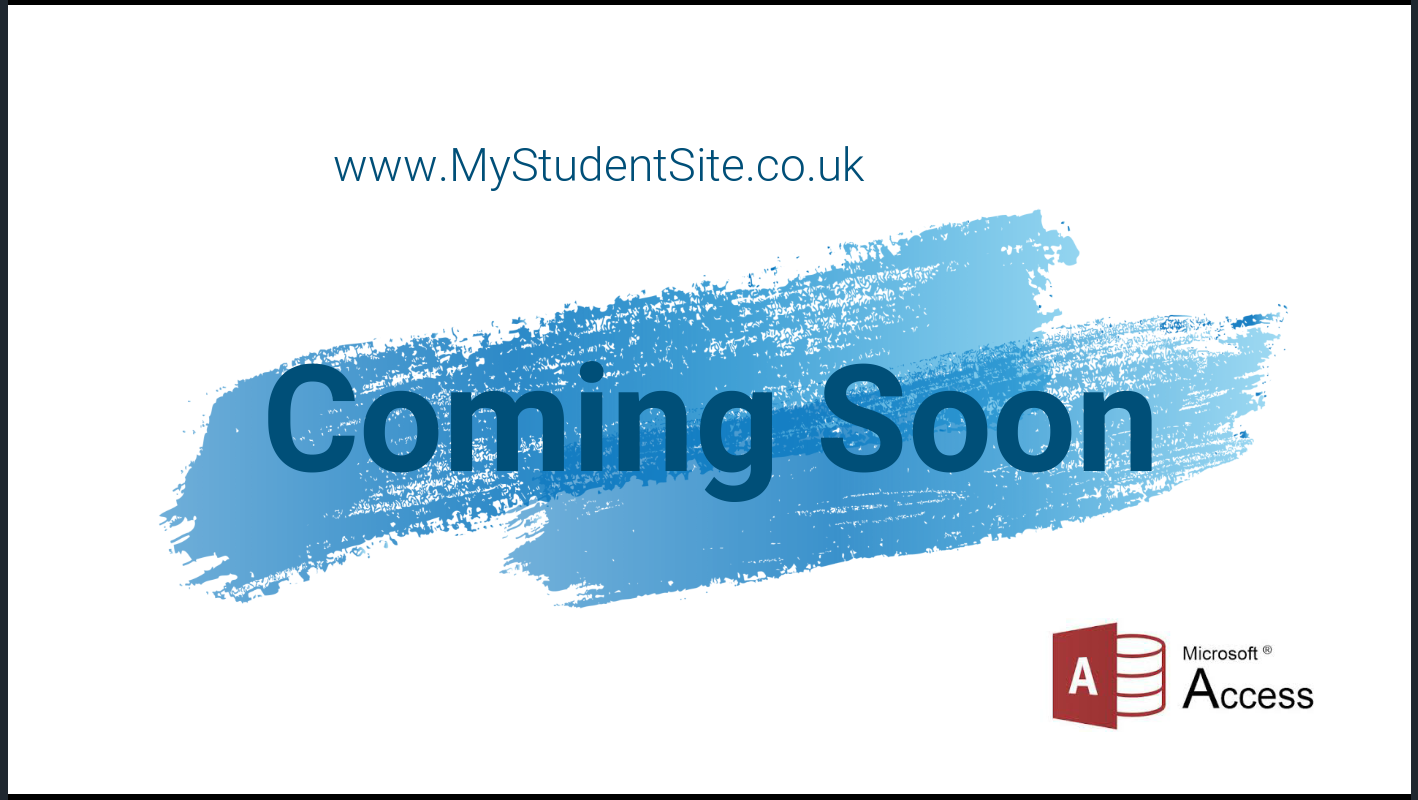week 6
Learning Aims and Objectives:
Aim: In this week's page, students will learn the.
Objectives:
1. By the end of this week's page students will be able to.
2. By the end of the week's page students will be able to.
3. By the end of the week's page students will be able to .
4. By the end of the week's page students will be able to
5. By the end of the week's page students will be able to.
C Creating a relational database structure
C1 Producing a database solution
Select and configure appropriate RDBMS and SQL tools to produce a database solution to meet
client’s requirements:
• creating, setting up and maintaining data tables
• creating links, relationships between data tables
Creating Lookup/Value Tables
• applying data validation rules
• generating outputs – user-generated queries, automated queries, reports
• user interface – navigation, data-entry forms, sub-forms
• automated functions
• populating the database:
o importing
o adding data
o manipulating data
Creating Composite Primary Keys.
• devising and using SQL statements to extract, manipulate and modify data
Last Updated
2024-09-04 14:25:09
Links to Learning Outcomes |
Links to Assessment criteria |
|
|---|---|---|
|
AO1 Demonstrate knowledge of database development terminology, standards, concepts and processes AO2 Apply knowledge and understanding of database development terminology, standards, concepts and processes to create a software product to meet a client brief AO3 Analyse information about database problems and data from test results to optimise the performance of a database solution
|
English
Reading: Read and understand texts, selecting material appropriate to purpose, collating from different sources and making comparisons and cross-references as appropriate.
Listening: Listen and respond to speakers ideas and perspectives, and how they construct and express meanings
Maths
Statistic extracting information: Tables, Diagrams, Charts and Graphs
Analysis of information: Interpreting Results, Drawing conclusions from data, Comparing data
Using Numbers: Counting, Place value, adding and subtracting, multiplying and dividing.
Collect and record data: Questionnaires, Observation, Tally
How 2's Coverage
Anonymous Assessment - Learners assess an anonymous piece of work containing deliberate mistakes against given success criteria.
GOs for Formative Teacher Assessment - Teachers give feedback to learners telling them specifically how to improve their visual demonstration of their understanding.
Anonymous Assessment - Learners assess an anonymous piece of work containing deliberate mistakes against given success criteria.
Files that support this week
Week 5←
PrevWeek 6←
PrevWeek 7←
Prev→
Next→
Next
